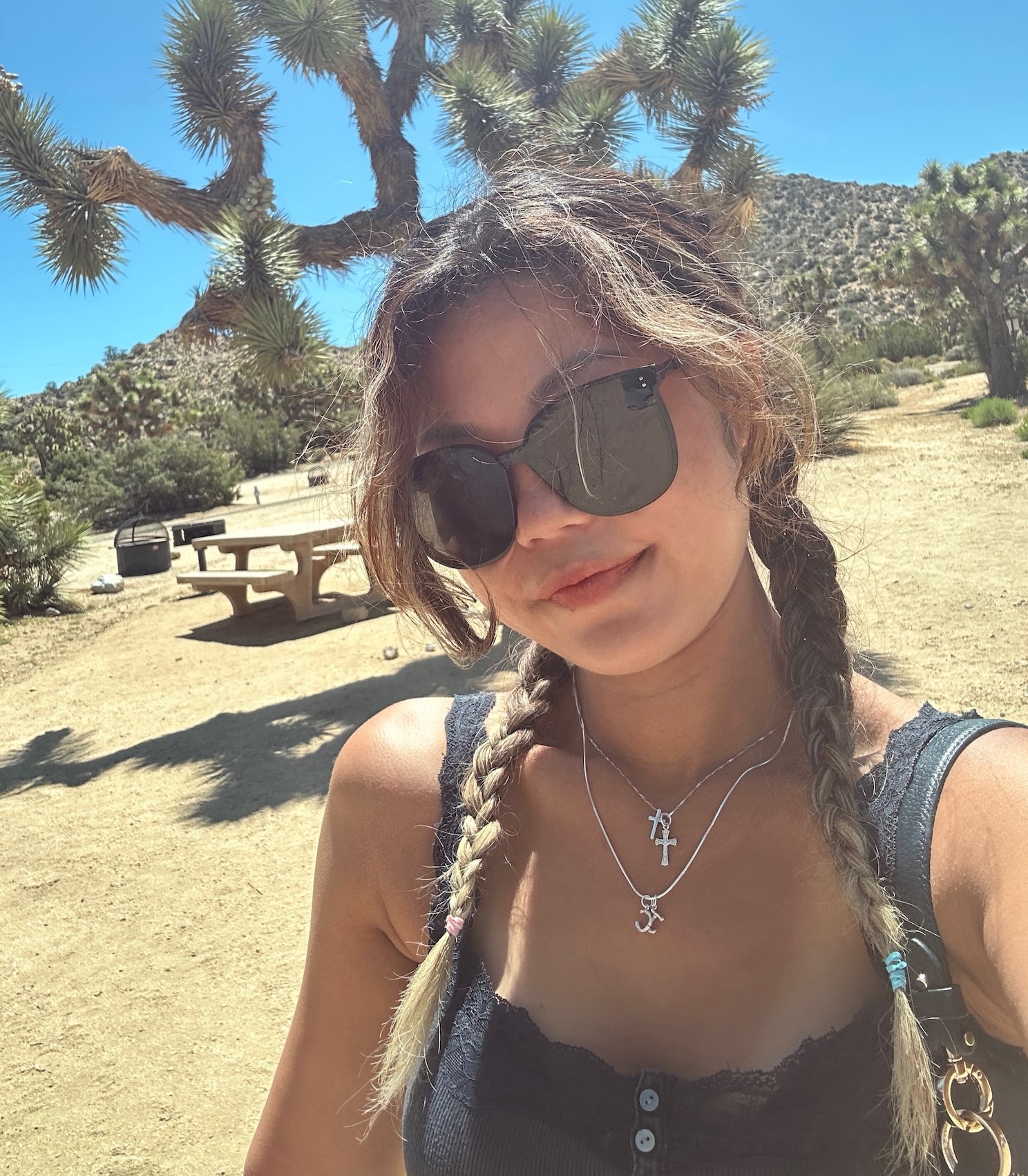Current Graduate Students
/https://siu.edu/search-results.php
Last Updated: Nov 07, 2025, 11:07 AM
Anahit Amiri
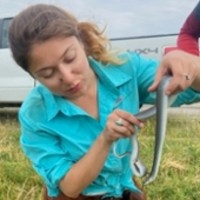
Advisors: Dr. Michael Eichholz
Research Interest:
Behavioral biology brings physiology, environment, and species interactions into a single lens, and behavioral ecology turns those insights into mechanism-focused conservation. Grassland birds have lost about half their numbers since 1970 and need timely action; they steady ecosystem health through insect control, seed dispersal, pollination, nutrient cycling, and other trophic roles.
Predation on grassland bird nests is high and a leading cause of nest failure. Anahit studies the grassland web, from insects and snakes to mammals, and steps into the predator’s role by following raccoons at night, examining how they move and forage across a heterogeneous landscape, and how individuals differ. These observations illuminate the nest line, where a raccoon’s nighttime choices can mean a depredated nest or a successful brood of fledglings, and that difference echoes into the next season.
Her path moved from Shiraz to France in high school, through a Bachelor of Sciences in Biology at Aix-Marseille University and a Master’s in Cognitive Neurosciences at Sorbonne University, then across the Atlantic to pursue a PhD in Wildlife Biology at Southern Illinois University Carbondale. She believes that the ways disciplines and cultures connect can chart a better path. A cheerful conspirator in possibility, she trusts that the not-yet-done can be done and that imagination is the most practical, and empathy the most powerful, tools for change.
Email: anahit.amiri@siu.edu
Ellen Audia
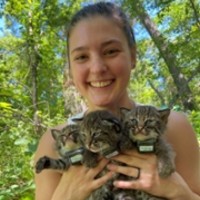
Advisors: Dr. Clay Nielsen
Research Interest:
Ellen studies the spatial ecology of bobcats in north-central Illinois. Bobcats have been and are currently being studied in southern Illinois where there is more abundant habitat. However, little is known about bobcat space use, resource selection, and movement in the north-central part of the state where habitat is fragmented by urban and agricultural development. The goal of her project is to fill gaps in the knowledge of bobcat spatial ecology in this northern region to better inform their management across the state and broader Midwest.
Email: ellen.audia@siu.edu
Katherine Buckman
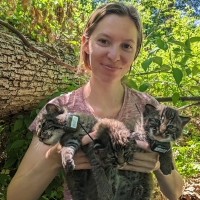
Advisors: Dr. Clay Nielsen and Dr. Brent Pease
Research Interest:
Katherine studies bobcat demography in north-central Illinois, with a focus on estimating survival and cause-specific mortality of adults, juveniles, and kittens. Bobcats are found throughout Illinois; however, little is known about their survival in agriculturally-dominated landscapes that characterize much of north-central Illinois and the greater Midwest. She will be looking at habitat and landscape-level factors influencing bobcat survival rates in this region.
Email: katherine.buckman@siu.edu
Emily Buege-Donovan
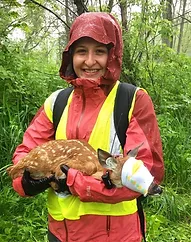
Advisor: Dr. Guillaume Bastille-Rousseau
Research Interest:
Despite being an icon of the Galapagos, little is known about the reproduction of the giant tortoises that inhabit the islands. In fact, the first 15 years of life for all chelonians are known as ‘the lost years’ because of how little is known about their early life stages. Emily's work aims to shed light on how tortoise migration affects the reproductive success and timing of nesting in female Galapagos giant tortoises. She also hopes to use the data from the GPS trackers to identify nesting events non-invasively throughout time. She and her collaborators anticipate that this work will fill gaps in our understanding of the tortoise life cycle. Before coming to SIU, Emily worked as a research scientist for the Wisconsin Department of Natural Resources. She holds a Bachelor of Science from Winona State University and a Master of Science in Geography from the University of Alabama. Her master's thesis examined what physical habitat variables influence cichlid nest site selection in the Bladen River, Belize.
Email: emily.donovan@siu.edu
Jessica Cheng
Advisors: Dr. Guillaume Bastille-Rousseau
Research Interest:
Email: jessica.cheng@siu.edu
Patrick Clark
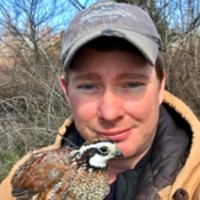
Advisors: Dr. Mike Eichholz
Research Interest:
Northern Bobwhite (Colinus virginianus) are a grassland-nesting quail species that have experienced significant population declines across their range in recent decades. According to the North American Breeding Bird Survey, estimated bobwhite numbers decreased by approximately 81% between 1966 and 2019. The major factors contributing to these declines are thought to be habitat loss and habitat fragmentation.
The focus of Patrick's research is to evaluate bobwhite habitat use, nest success, and survival in southern Illinois. He is using radio-telemetry to track quail movements and find nests on grassland patches that are managed using prescribed fire. He also uses call count surveys to study quail occupancy and habitat use at broad spatial scales.
Email: james.clark@siu.edu
Kristine Cotten
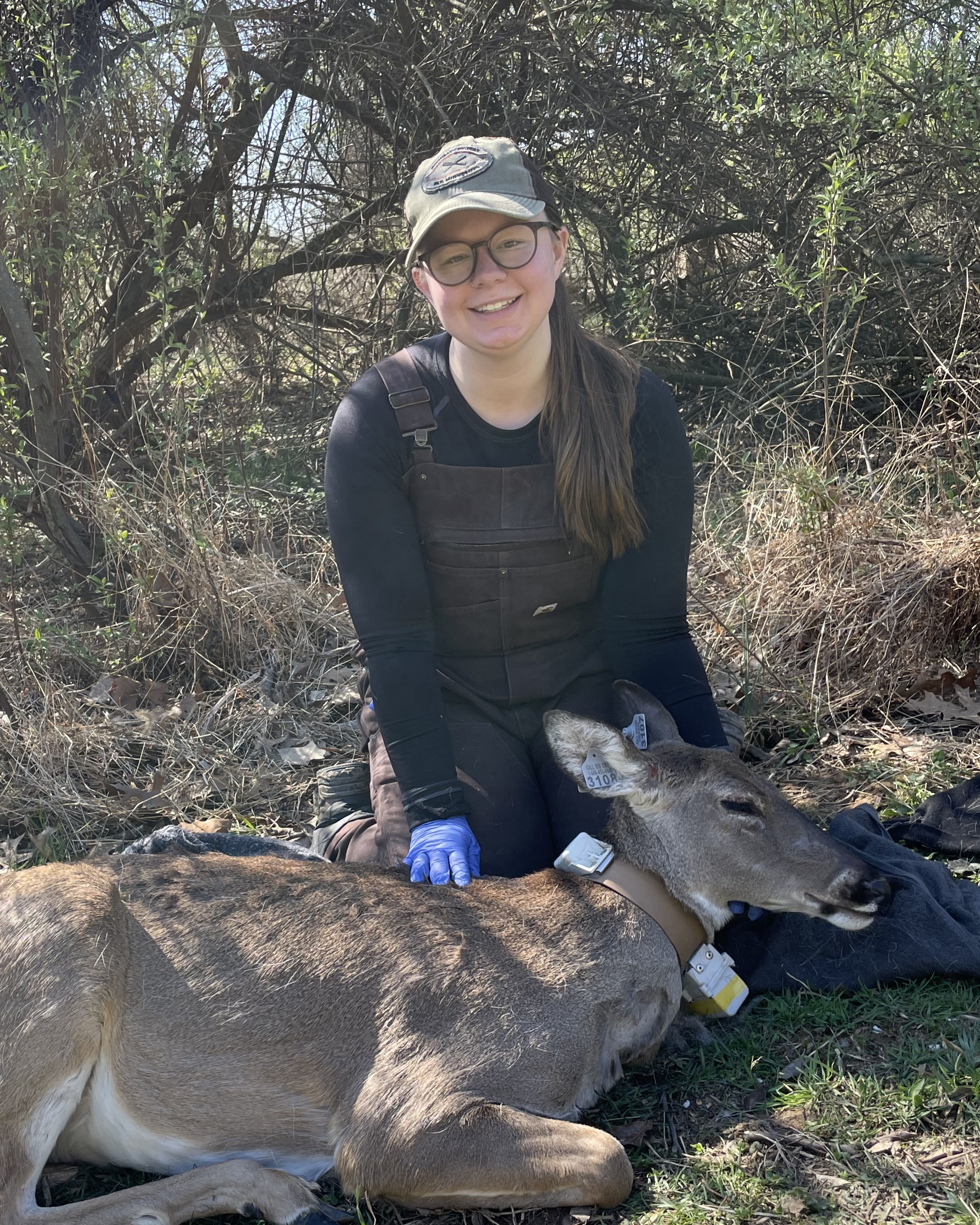
Advisor: Dr. Guillaume Bastille-Rousseau
Research Interest:
Email: kristine.cotten@siu.edu
Meredith Goza
Advisors: Dr. Guillaume Bastille-Rousseau
Research Interest:
Email: meredith.goza@siu.edu
Noelle Grabowski
Advisors: Dr. Guillaume Bastille-Rousseau
Research Interest:
Muskrats (Ondatra zibethicus) are keystone species of wetland ecosystems that have historically been observed in every county in the state of Illinois. Over the past few decades populations have declined throughout the United States. To address the decline, it’s important to have reliable strategies for assessing population size and distribution. Noelle’s work aims to evaluate the use of UAVs (drones) as a method for sampling muskrat abundance. Additionally, she will investigate terrestrial and aquatic habitat characteristics impacting muskrat survival throughout the state of Illinois. Prior to joining the CWSR in 2025, Noelle completed her Bachelor of Science in Biology at Butler University in 2022 and spent time working as a field technician around the country.
Email: noelle.grabowski@siu.edu
Sofía Granados-Martinez
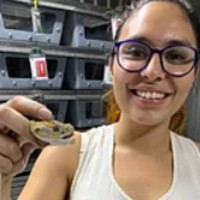
Advisors: Dr. Jason Brown
Research Interest:
Email: sofia.granadosmartinez@siu.edu
Kevin Kellk
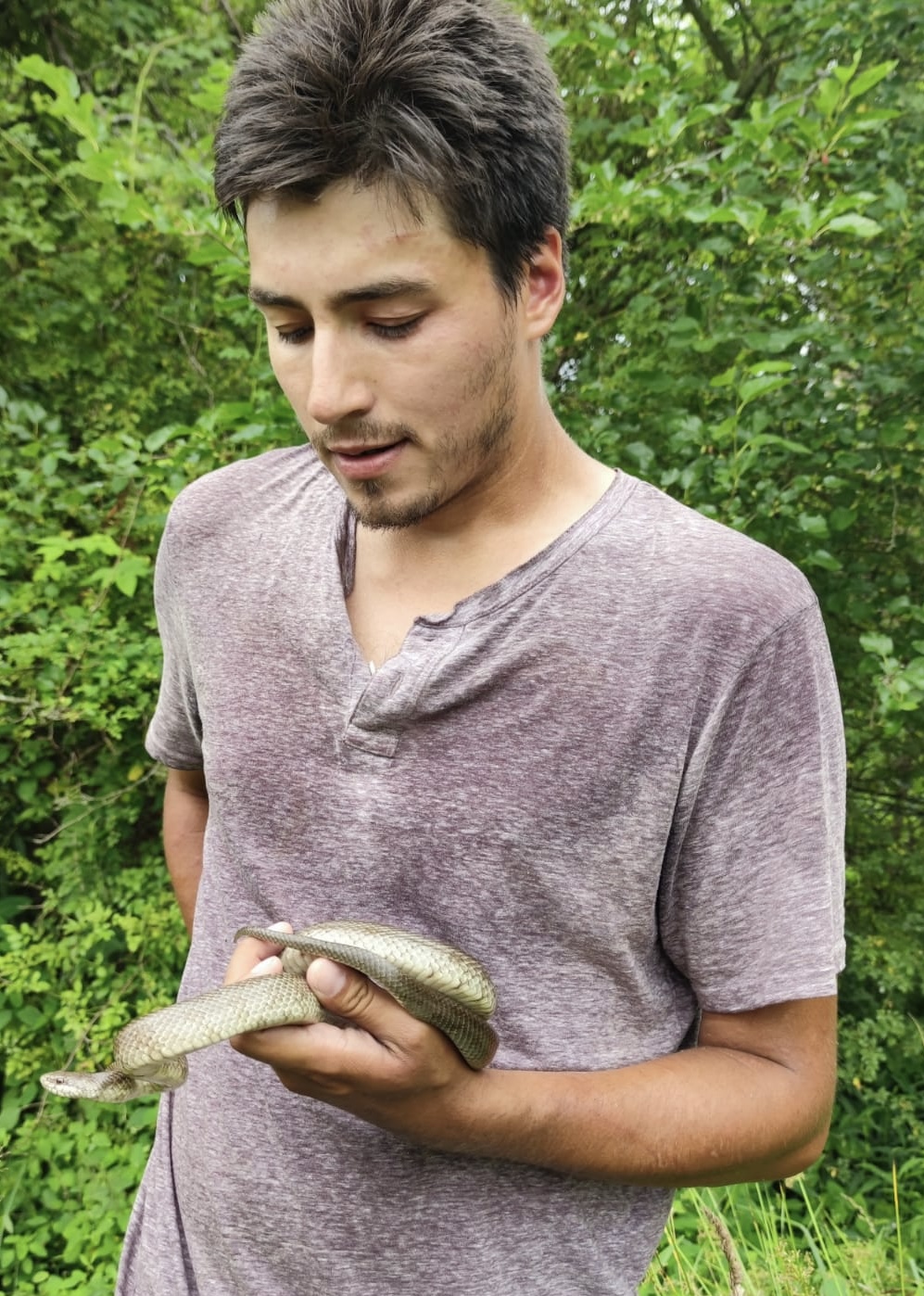
Advisors: Dr. Michael Eichholz
Research Interest:
Email: kelvin.kellk@siu.edu
Tadao Kishimoto
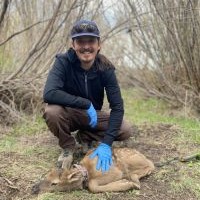
Advisors: Dr. Guillaume Bastille-Rousseau
Research Interest:
Email: tadao.kishimoto@siu.edu
Cullen Mackenzie
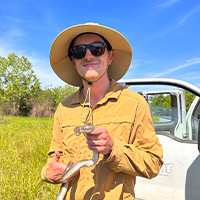
Advisors: Dr. Michael Eichholz
Research interest:
Prescribed burns are an effective management strategy for grassland vegetation restoration. This controlled disturbance helps eliminate woody vegetation encroachment that degrade grassland habitat when left unattended. Additionally, prescribed burns have been documented to support the imperiled North American grassland birds. However, despite these successes, very little is known about the implications prescribed burns might have on grassland snakes.To better understand this knowledge gap, Cullen will be studying grassland snake movement(American racer [Coluber constrictor] radio telemetry), community assemblages (coverboards), habitat use (telemetry/coverboards/vegetation surveys) and predator/prey biodiversity (small mammal Sherman traps/meso-predator camera traps/grassland bird nesting videos) in non-burned and recently burned tall grass prairies in Southern Illinois. This data will be useful for both the ecological understanding and applied conservation for grassland snakes, birds, and otherassociated biota.
Email: cullen.mackenzie@siu.edu
Ashley McDonald
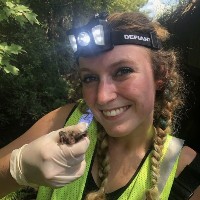
Advisors: Dr. Clayton Nielsen and Dr. F. Agustín Jiménez
Research Interest:
Raccoons (Procyon lotor) are ubiquitous throughout the US and Illinois as they are extremely versatile animals. The density of raccoon populations in urban areas has significantly increased due to the abundance of anthropogenic resources such as food (e.g., garbage, crops, backyard gardens) and shelter (e.g., crawlspaces, attics, decks). This close proximity to humans poses a potential health hazard as raccoons are known to carry various diseases and parasites that are transmissible to humans. Ashley's research will identify the prevalence of diseases and parasites in the raccoon population of northern Illinois with an emphasis on zoonoses such as Borrelia burgdorferi (the causative agent of Lyme disease), Rickettsia rickettsii (the causative agent of Rocky Mountain Spotted Fever), the causative agents of Anaplasmosis and Ehrlichiosis, Baylisascaris procyonis, and Trypanosoma cruzi. This research will allow us to better understand the health risk that raccoons pose to humans and will help inform wildlife management decisions to better integrate the wellbeing of wildlife and humans.
Email: ashley.g.mcdonald@siu.edu
Seth Morelock
Advisors: Dr. Guillaume Bastille-Rousseau and Dr. Brent Pease
Research Interest:
Seth is a PhD student who joined SWEL and CWSR in the fall of 2025. Seth is using camera trapping, thermal imaging (UAV and vehicle surveys), and GPS collars to measure white-tailed deer densities throughout parts of Illinois. For his Master’s thesis at East Tennessee State University, he studied how regenerative grazed cattle farms impact bat activity in southern Appalachia. Seth enjoys hunting, fishing, and hiking during his free time.
Email: seth.morelock@siu.edu
Nadine Pershyn

Advisors: Dr. Guillaume Bastille-Rousseau
Research Interest:
Gray fox (Urocyon cinereoargenteus) populations have declined across the Midwest over the past several decades without clear causation, although possible influences include canine distemper, coyote predation, and habitat loss due to land-use changes. The gray fox is a relatively understudied furbearer, and Nadine's research aims to contribute to addressing these knowledge gaps. She's investigating survival and cause-specific mortality, as well as home-range, habitat use, and landscape connectivity. Understanding the ecology of this struggling population will be critical in any efforts to slow or reverse the decline.
Email: nadine.pershyn@siu.edu
Jasmine Weber-Pierson
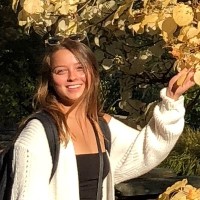
Advisors: Dr. Michael Eichholz
Research Interest:
Email: jasmine.weberpierson@siu.edu
Holly Redmond
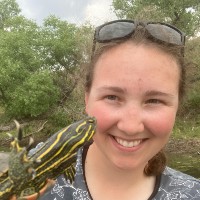
Advisors: Dr. Guillaume Bastille-Rousseau
Research Interest:
Holly is most interested in the behavioral and evolutionary ecology of matrilineal social species. Her research at SIU takes an integrative approach to investigate relationships between stress physiology, immune condition, and individual movement behavior in white-tailed deer in central and southern Illinois. These areas of research can provide nuanced insight into the disease ecology of white-tailed deer, which is of particular contemporary interest in this economically and ecologically significant species.
Email: holly.redmond@siu.edu
MJ Suriyamongkol
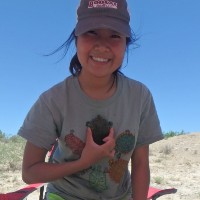
Advisors: Dr. Clayton Nielsen and Dr. John Groninger
Research Interest:
Giant cane (Arundinaria gigantea (WALT.) MUHL.) is one of the three bamboo species native to the United States. Historically, giant canes covered a large area throughout the southeastern states. Due to anthropogenic disturbances including land clearing for agriculture, alteration of periodic fire, and overgrazing by livestock, giant cane habitat has decreased drastically to <2% of its original extent and is considered a critically endangered ecosystem. Studies have shown that giant cane is a good candidate for a riparian buffer species. In addition, the cane habitat also supports diverse wildlife species both vertebrates and invertebrates. However, knowledge on utilization and occupancy of cane habitat by wildlife in southern Illinois has been limited to species of concern such as Swainson’s warbler.
The focus of MJ's study is to expand our understanding of giant cane fauna including birds, mammals, reptiles, and amphibians in southern Illinois and the characteristics of canebrakes that contribute to habitat use by these faunas in comparison to the non-cane habitat, using multi-species, multi-season occupancy modeling. Overall, she anticipates that this study will aid in management of the giant canes and support the conservation of the cane habitat for wildlife.
Email: thanchira.suriyamongkol@siu.edu
